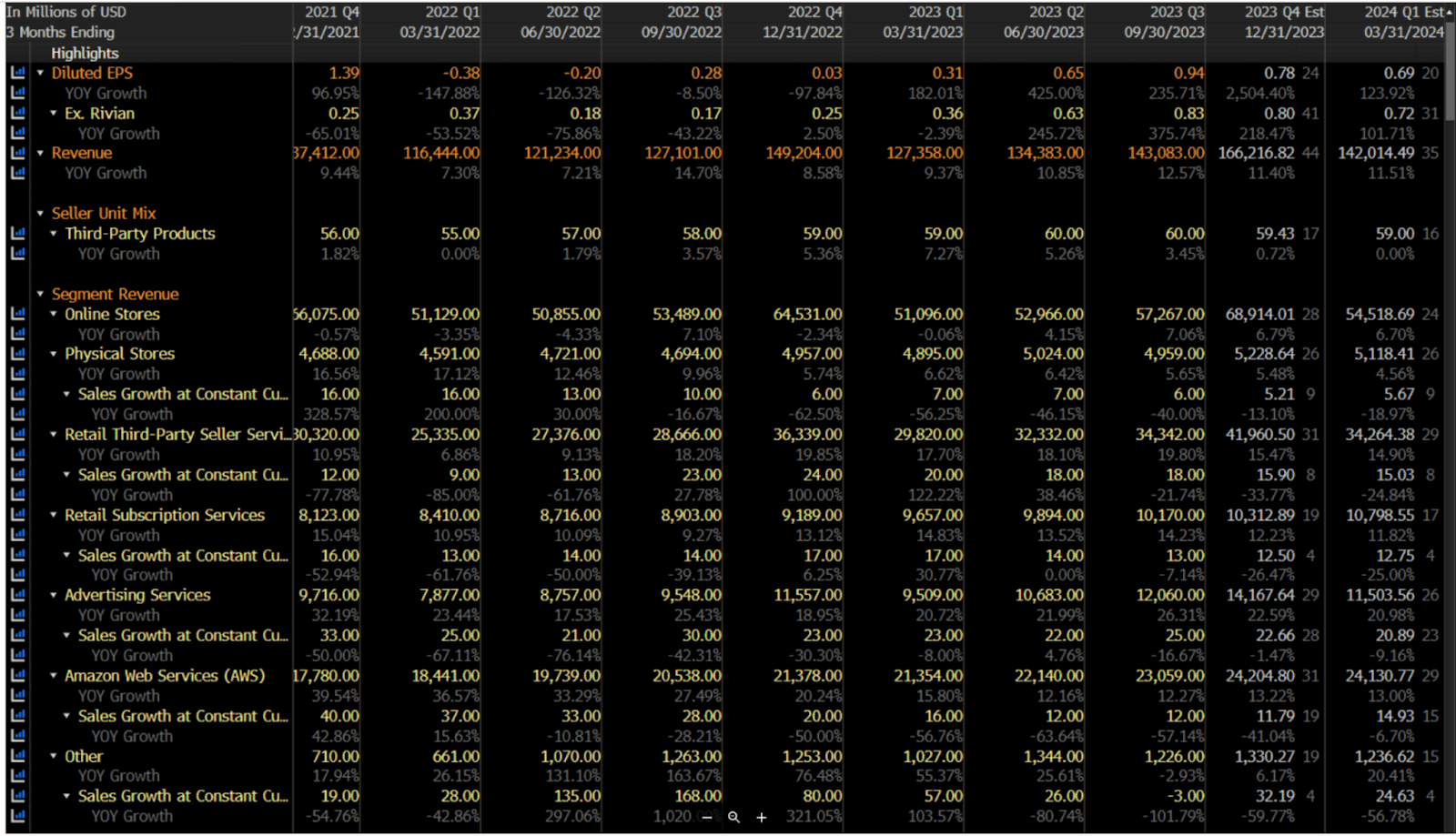Earnings Preview: Successful restructuring and resilient consumption to boost Amazon's earnings
Amazon (AMZN) reports its Q4 results after Wall Street’s closing bell on February 1, 2024. We preview what to expect from the results and analyse the stock’s technicals.
Amazon (AMZN) reports its Q4 results after Wall Street’s closing bell on February 1, 2024. We preview what to expect from the results and analyse the stock’s technicals.
Amazon earnings tipped to surge thanks to resilient consumer
According to Bloomberg, analysts expect Amazon’s earnings to surge in Q4, thanks to resilient consumer activity and a successful restructuring of the business. EPS is tipped to rocket by 2,504% to $0.78, courtesy of minuscule earnings in the corresponding period in 2022.
Analysts project record revenues from Amazon in Q4, driven by solid advertising sales. The greatest contributor to the topline will remain e-commerce, with the quarter’s results boosted by what’s expected to be a strong holiday sales period, especially in the US.
 (Source: Bloomberg)
(Source: Bloomberg)
Regarding the outlook, the markets will be homing in on the performance and guidance of Amazon Web Services. The segment remains Amazon’s major growth driver and arguably remains the leader in its market. However, there’s a growing perception that Amazon is lagging behind its peers on the roll-out of artificial intelligence, which could hamper growth.
Brokers are (almost) universally bullish on Amazon’s stock. Out of 71 analysts surveyed by Bloomberg, 69 have a “buy” recommendation, while two recommend a “hold”. The consensus price target is $184.80, which is at a steep premium to market value.
(Source: Bloomberg) Past performance is not a reliable indicator of future results
Amazon shares rise to pre-rate hiking cycle levels
Amazon shares are in an uptrend, breaking technical resistance to re-enter the pre-rate hiking cycle range. The stock has entered overbought levels on the weekly RSI. However, momentum remains skewed to the upside, and the indicator is below readings that have signalled consolidation or reversals in the past. The next major level of resistance could be found at around $170 per share; support could be found at approximately $160 per share and $140 per share, with the latter also coinciding with the 20-day MA.
(Source: Capital.com) Past performance is not a reliable indicator of future results